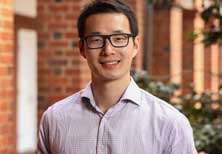
University of Virginia School of Engineering Assistant Professor Liheng Cai is developing a new synthetic rubber that is not stereotypical of durable materials that are stiff, heavy, and bulky.
Cai’s lab is heeding the challenge of coming up with a new soft material that is “ soft as a Jello-O or ice cream, or even, as soft as biological tissues – but that contains no water or solvents”, according to Cai.
Cai previously was lead author on a team that developed a strategy to make a rubber with the desired softness using “fat” silicon-based polymers characterised by branches that bush out from a central backbone. Typically, polymers used to make rubber occur in long strands that tend to tangle into knots, he said. The tangling limits how soft the material can be, a problem the fat polymers don’t have. Now Cai’s lab is focusing on designing the rubber to be recyclable and to have superior mechanical properties in the context of stiffness.
“The stiffness of the rubber we want to make is more than 1,000 times softer than conventional rubber, such that it can be used to interface with biological objects,” he said.
Rubber, one of the widely used and most common materials in the world comes in a natural form made from latex, a milky substance found in plants, or is synthesised from petroleum-based molecules, he said. Although most rubbers are regarded as soft materials, they are still much stiffer than living tissue. You can add water to rubber to make a hydrogel to interface with biological objects, Cai said.
Another characteristic of the new rubber is to make it responsive to stimuli such as heat, mechanical force, light, or acidity that can change it from solid to liquid or back again. This ability results in a new class of soft materials for 3D printing that can be used in applications such as stretchable materials with embedded electronics; soft robots built from pliable, more life-like materials; optical devices; and tissue engineering.
“If we are able to create new materials, this will always bring new opportunities, new tools, and also new devices that can do things that we can never do before, ” he added.
